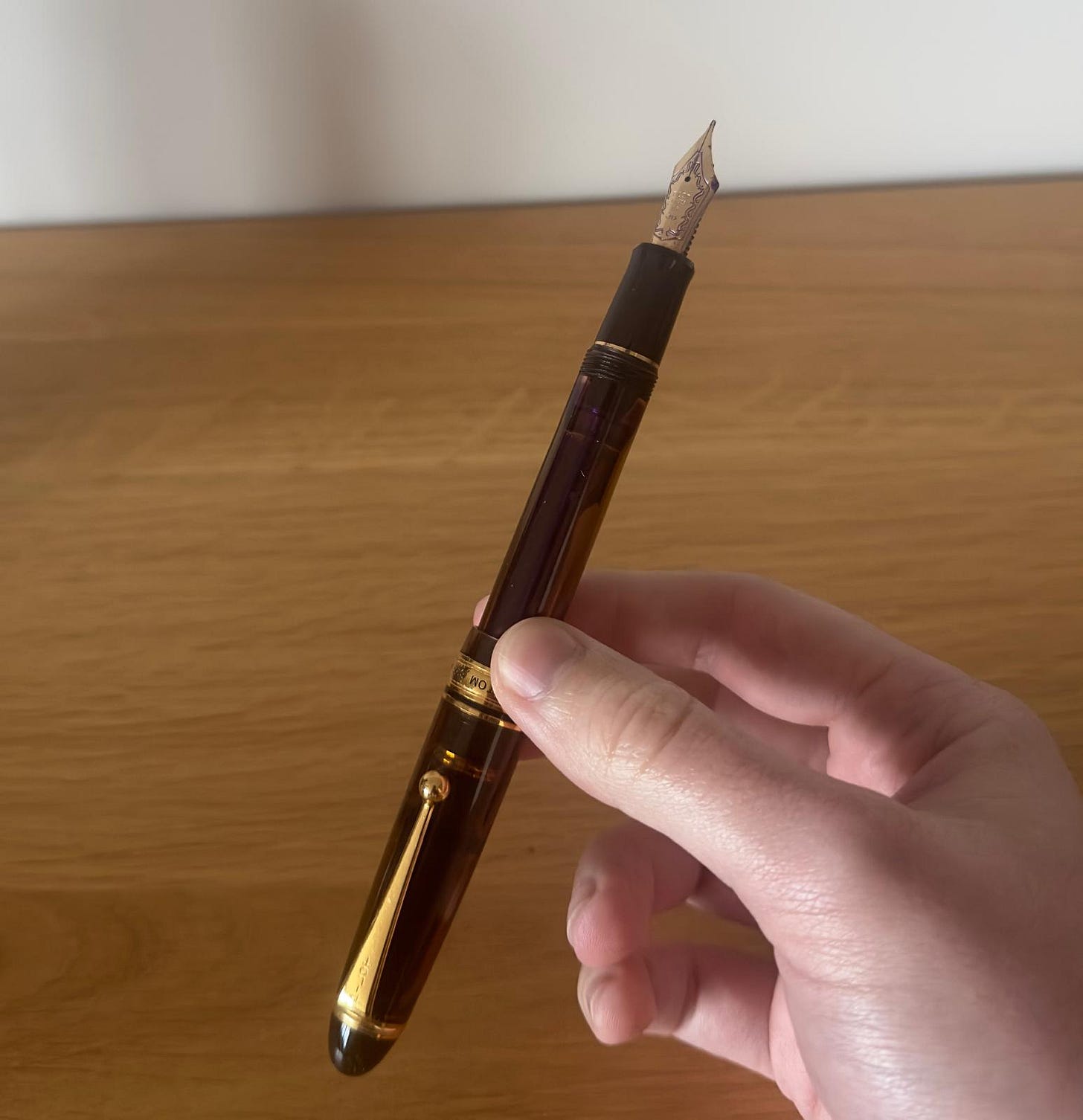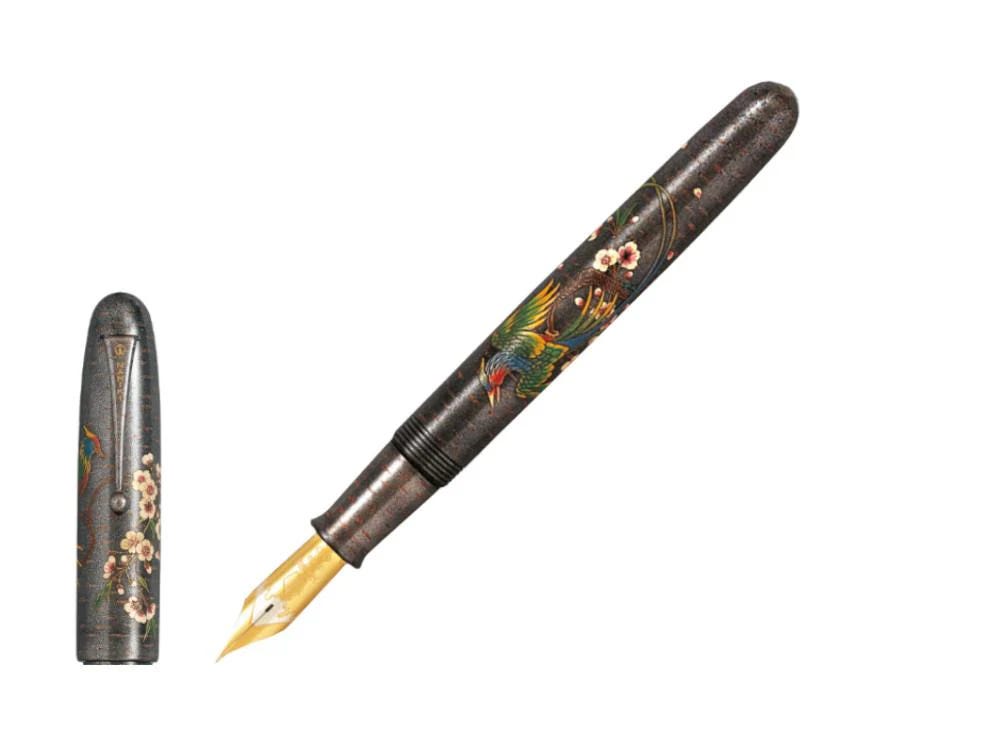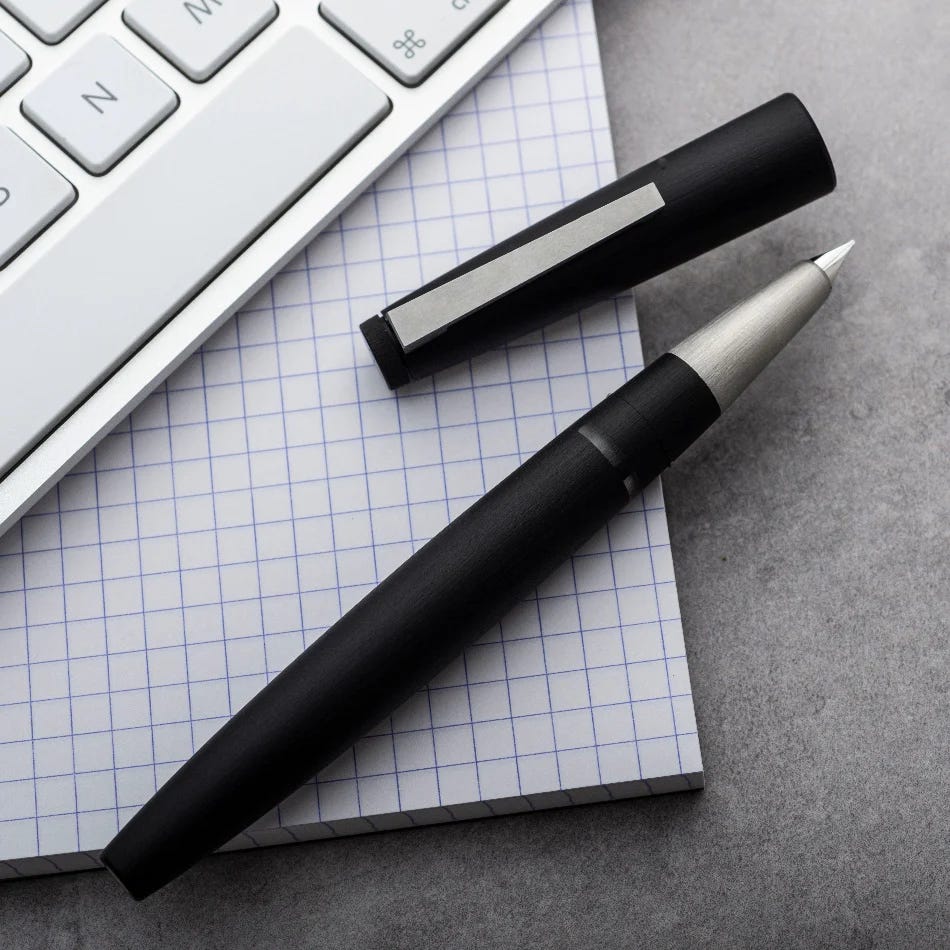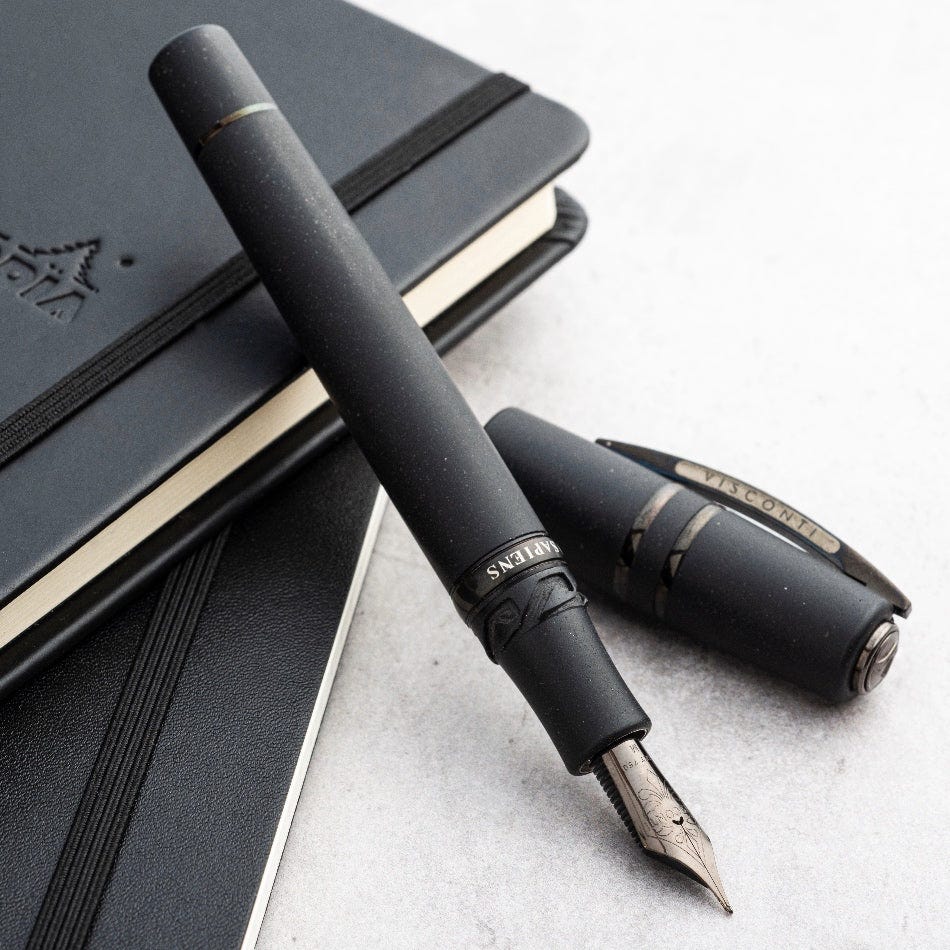A love letter to Fountain Pens
Taking the slow route
Hi, my name is Grant, and I'm a fountain pen addict.
Ever since I went to France at 15 and happened upon a cheap Waterman fountain pen, I have always loved them. I can count on one hand the number of times I've willingly used a ballpoint pen, and I've almost exclusively used purple ink, except in exams, for the last 9 years.
I've spent far too much money on pens, and on many bottles of different shades of purple inks. That will likely still have ink long after I'm gone. At last count I am at 7 bottles of ink and 14 pens.
For anyone who has known me since I was 15, this has often been remarked upon by teachers. I'll never forget my history teacher, Mr. Kesterton, making fun of my use of fountain pens and joking that one day I would come in with a quill and ink - which I did strongly consider.
Pens are not a topic of reflection for 99.9% of the population, something I'm well aware of. Often, when I talk to my dad - who I got re-interested in fountain pens after he’d owned one for years - I can sense my mum rolling her eyes.
But to me, fountain pens represent a desire to return to a more analogue experience. I, for some reason—maybe I'm just a masochist—prefer things that are difficult, slow, and I am known for being very particular.
The best example of this is my enjoyment of sourdough. I started baking sourdough before the pandemic, and anyone who has tried can verify that it's a very slow, painful process of adjustment; with every loaf you bake, there's always room for improvement. No loaf is the same, but the point is to enjoy your progress with each one.
This preference for difficult things permeates my whole life. I prefer cast iron because of the requirement for seasoning, I only use a custom carbon steel knife because it requires extra care in its usage, I prefer mechanical keyboards for their customisability, I've spent countless hours thinking about how to perfect both my home and office desk setups to my liking, I use a far too expensive hand grinder and roast my own coffee beans because I'm obsessed with good coffee, and, of course, I write with fountain pens.
Fountain pens are quite simple; they work through gravity and capillary action to force ink from the reservoir, through the feed, and onto the nib. Ballpoint pens work similarly: ink is stored in a reservoir, and as the ball moves across the paper, gravity forces ink down onto the ball and then onto the paper.
In almost every respect, ballpoints - pardon the pun - on paper are better. They are more durable, write almost at any time on any paper (including in space), cost virtually nothing, require no maintenance, and make virtually no mess.
Fountain pens, by comparison, are nearly the exact opposite. They have delicate nibs that can break with little pressure, often need higher quality paper, the cheapest fountain pen starts at around £10 but can cost hundreds or even thousands, often they require maintenance, are a hassle to fly with as they might explode, some pens are liable to leak while writing, and every pen will almost certainly leave some ink on your fingers.
Yet, in two respects, fountain pens are far superior. The writing experience is unmatched with a fountain pen. One only has to experience the pleasure of writing with a gold-nibbed fountain pen to understand the difference (if anyone who knows me wants to try, I am more than willing to gain more converts to the fountain pen cause).
For me, the pleasure of picking up my Pilot Custom 823 (pictured below), opening the ink well to allow ink to flow to the nib (as this pen forms a vacuum to prevent leaking when not in use), and sitting down to write a letter or a diary entry is unmatched. The glide of the gold nib across the page feels like butter, and you can write for pages without noticing the pen in your hand.
Fountain pens are also - in my opinion - far more beautiful than ballpoint pens. Ballpoints are strictly utilitarian; they serve their function of writing, no more, no less.
Fountain pens, on the other hand, are like art pieces. Each has a unique history of design and heritage. With a certain beauty to each element of the pen, every part is carefully designed to convey something, whether it be the nib's intricate design, the body of the pen in a unique material, or simply the clip.
Each company has a different design philosophy, usually reflecting the culture of their country and founders. Pilot, a Japanese pen company, is renowned for their Namiki pens, which are ebonite pens painted using urushi lacquer. These pens are handcrafted by a master artist, typically taking 4 months per pen. They start at £400 but typically cost £2000+.
Lamy, a German pen company, is known for their use of Bauhaus design principles, a German philosophy that prioritises form following function with simplicity and industrial materials at its core. This leads to elegant pens like the Lamy Al-star but also iconic ones like the Lamy 2000 (pictured below).
Visconti, an Italian pen company, is known for their luxury pens, which use rare and unique materials alongside innovative techniques. Their flagship pen is the Visconti Homo Sapiens (my grail pen and also pictured below), made of basalt lava from Mount Etna, which means the pen wicks away moisture from your fingers as you write. Alongside its 23k palladium alloy nib, which is more flexible than gold and is almost unique to Visconti.
This is just the tip of the fountain pen iceberg, with hundreds of companies from Taiwan to America, from enormous operations to one-person companies. Yet each of these companies offers pens with levels of history and heritage unmatched by mass-produced ballpoint pens.
Every time you buy a fountain pen, you're making a conscious choice about aesthetics, nib material, heritage, and the filling mechanism. And once you have your pen, it becomes uniquely yours, as over time, fountain pen nibs wear to match the writing style of their owner.
There's also beauty in knowing that each new fountain pen you get will likely outlive you and be passed down through your family.
Even the process of using a fountain pen differs from using a ballpoint, as choosing a fountain pen is an active decision. You choose a pen for each occasion, a longer session might necessitate a pen with a higher ink capacity, a signature will usually mean a pen with a broad nib, a meeting will likely mean a stealthy looking pen.
You must also ensure the pen has ink and that you have the correct paper. The process is almost meditative.
But don't just take my word for it; there's a large community built around fountain pens. Countless YouTube channels and podcasts discuss the latest inks or review pens. And there are even multiple large organised events all around the UK and the US that allow people to meet and buy pens. There was even recently a controversy that made the news. Lamy, re-released their Dark Lilac ink (which looks nothing like the old one) and it ended up in The New York Times. I, unfortunately, never got a bottle of the original but do enjoy the re-release.
The depth to fountain pens is endless, but these communities are all set up around one thing, which is admiring the functionality and beauty of pens.





